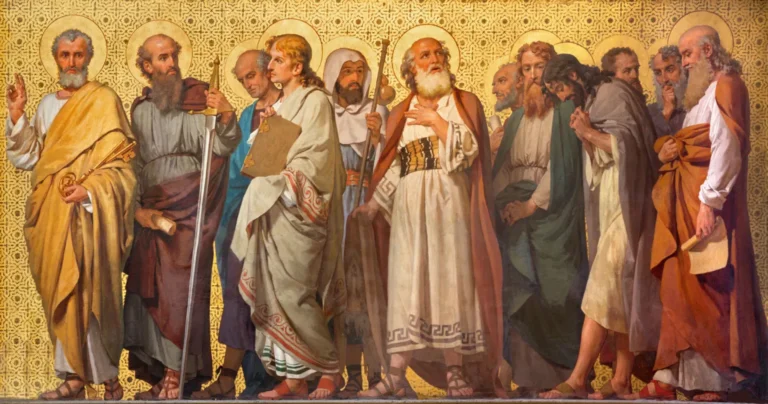You might have heard about so-called “lost gospels,” like the Gospel of Thomas or the Gospel of Peter, and wondered why these texts aren’t included in the Bible. Some modern voices suggest these writings were unfairly excluded from the NT canon or suppressed by early church leaders for political reasons. But is this theory based on solid historical evidence—or just speculation?
In this article, we’ll explore what the apocryphal gospels are, how they compare to the canonical New Testament books, and why early Christians rejected them in favor of Matthew, Mark, Luke, and John. Understanding this topic not only strengthens our trust in Scripture but also helps us respond with clarity and confidence when questions about so-called “lost books” arise.
What Do “Canon” and “Apocryphal” Mean?
Before diving into the details, let’s define two important terms:
- Canon: This refers to the officially recognized collection of inspired books that make up the Bible. For Christians, this includes 66 books—39 in the Old Testament and 27 in the New Testament.
- Apocryphal: In a general sense, this term refers to books not included in the biblical canon. Some apocryphal texts may resemble Scripture in language or subject matter, but they were never considered inspired by the early church.
Some confusion arises because “the Apocrypha” can also refer to a set of Old Testament-era books accepted by Roman Catholics but not Protestants. In this article, we’re focusing on New Testament apocryphal books—those written after the time of the apostles but falsely attributed to them, such as the Gospel of Thomas or the Gospel of Judas.
Are Apocryphal Gospels Equal?
A popular misconception today is that all gospels—canonical and apocryphal—are equal in value and authenticity. This view argues that the New Testament canon was shaped not by divine guidance, but by political agendas, with one group of early Christians enforcing their preferred texts while excluding others.
But when we examine the historical record, a different picture emerges. The canonical gospels—Matthew, Mark, Luke, and John—stand apart from apocryphal gospels in at least three key areas: authorship, timing, and content.
Authorship: Apostolic Roots
The New Testament gospels were either written by apostles (Matthew and John) or by close companions of apostles (Mark was a disciple of Peter, Luke was a companion of Paul). These individuals had direct or close access to eyewitnesses of Jesus’ life, death, and resurrection.
In contrast, apocryphal gospels were written much later—well into the second century or beyond—after the apostles had died. Despite names like the Gospel of Peter or Gospel of Thomas, there is no historical evidence that the apostles themselves wrote or endorsed these works. In fact, these names were often attached after the fact to lend credibility to writings that were already viewed as questionable.
Why would someone write a gospel and then falsely attribute it to an apostle? Simply put, the authority of apostolic authorship was highly valued in the early church. A book that claimed to be written by Thomas or Mary Magdalene might be more likely to gain attention—regardless of whether the claim was true.
Timing: Closeness to the Events
Another critical factor is timing. The canonical gospels were written in the first century, during or shortly after the lifetimes of the eyewitnesses. Most scholars agree that Mark was likely written in around 60 AD, Matthew and Luke in the 70s or 80s, and John around 90 AD.
In contrast, apocryphal gospels—like the Gospel of Thomas—were written in the second century or later, long after firsthand witnesses of Jesus had died. That alone raises questions about their reliability.
If you wanted to learn about an event, would you prefer a report written by someone who witnessed it—or one written by someone living 100 years later? The early church asked the same question and rightly prioritized texts connected to the apostles and the eyewitness community.
Content: Theological Soundness and Historical Credibility
The differences don’t stop at authorship and timing. The content of apocryphal gospels often diverges sharply from the canonical gospels.
Consider the Gospel of Peter. In this second-century text, the resurrection account includes Jesus emerging from the tomb as a 60-foot tall giant, accompanied by a floating, talking cross. This kind of dramatic, mythical imagery stands in stark contrast to the restrained and historically grounded accounts in Matthew, Mark, Luke, and John. In the canonical gospels, the resurrection is never witnessed directly—only the empty tomb is seen. That kind of detail reflects a more natural, eyewitness-based account.
Many apocryphal texts also promote theological ideas inconsistent with the rest of Scripture, such as secret knowledge (Gnosticism), mystical revelations, or distorted views of Jesus’ nature and purpose. The early church quickly recognized these contradictions and rejected such writings.
Misconception: Apocryphal Gospels Were Equally Popular
Some claim that apocryphal gospels were widely read and cherished, only to be suppressed by church councils in the fourth century. But again, the historical data doesn’t support this idea.
One way to measure the popularity of ancient texts is by counting how often they were quoted by early Christian writers. The canonical gospels were quoted thousands of times by leaders like Clement of Alexandria, Irenaeus, and Tertullian. In contrast, apocryphal gospels are rarely quoted—usually to refute them.
Another way to measure popularity is by manuscript evidence. There are more than 2,500 Greek manuscripts of the four canonical gospels. By contrast, we have only three fragmentary copies of the Gospel of Thomas—and the most complete copy wasn’t even discovered until 1945, in a Coptic-language manuscript buried in the sands of Egypt.
This vast difference in manuscript numbers tells us what early Christians were actually reading, copying, and preserving. The canonical gospels weren’t just preferred—they were overwhelmingly dominant.
Why This Matters
Understanding why the apocryphal gospels were excluded from the canon isn’t just an academic exercise. It reinforces a central truth of the Christian faith: God preserved His Word through history so that we could have confidence in what we read today.
The books of the New Testament weren’t chosen arbitrarily or by political power plays. They were recognized by the early church as inspired because they bore the mark of apostolic authority, were consistent with Old Testament prophecy, and reflected the authentic voice of Jesus.
When we understand the historical, theological, and literary reasons for the canon’s formation, we can better defend our faith and deepen our trust in the Scriptures.
The next time someone mentions the Gospel of Thomas or a “lost book of the Bible,” remember: the early church wasn’t hiding the truth—they were safeguarding it. And the Bible we hold today is a testimony to God’s enduring truth, carefully preserved through time for every generation.









